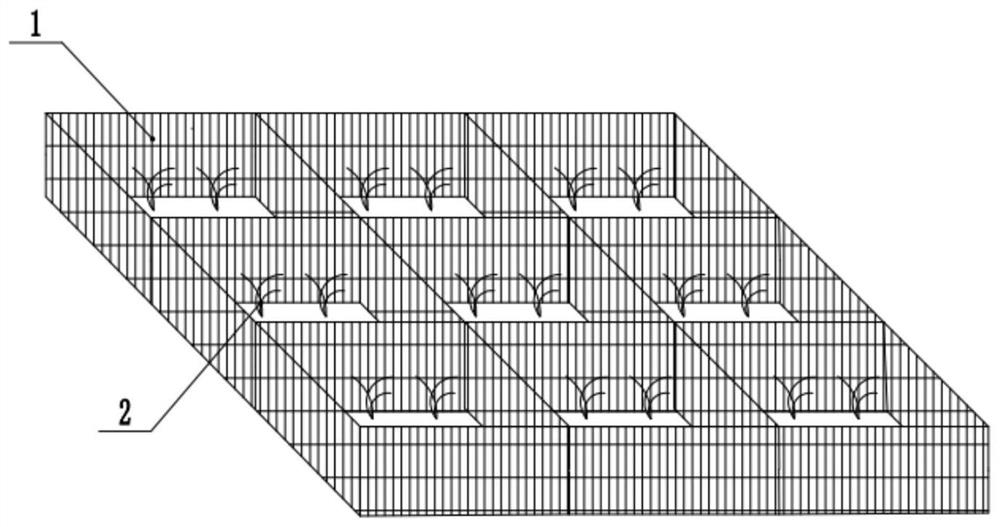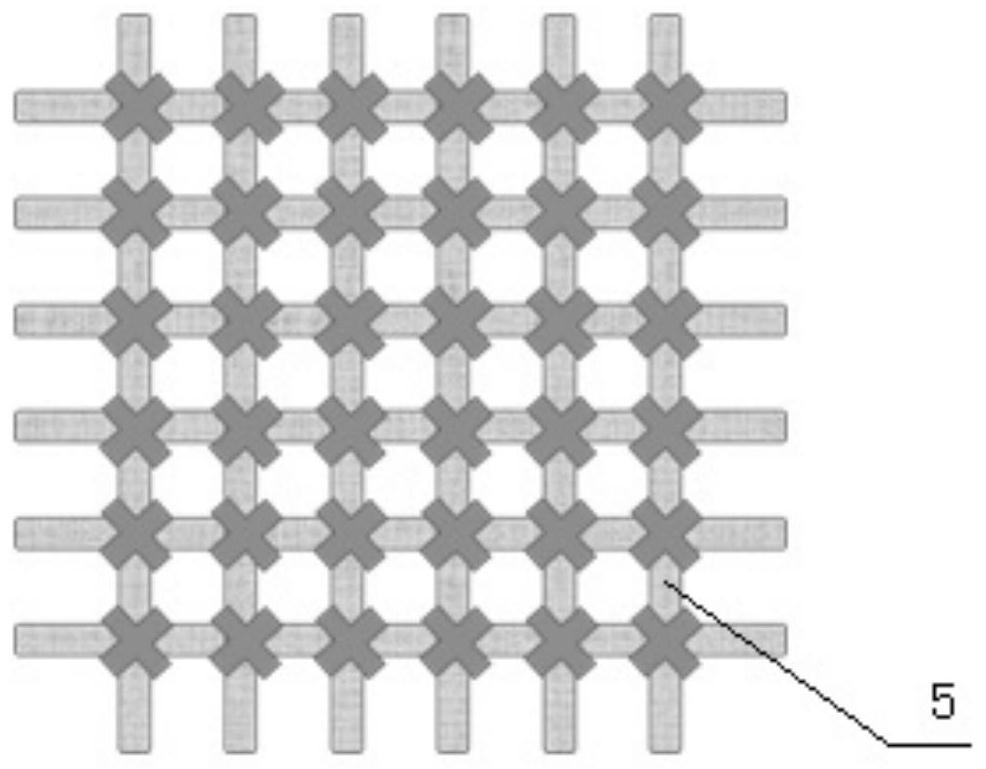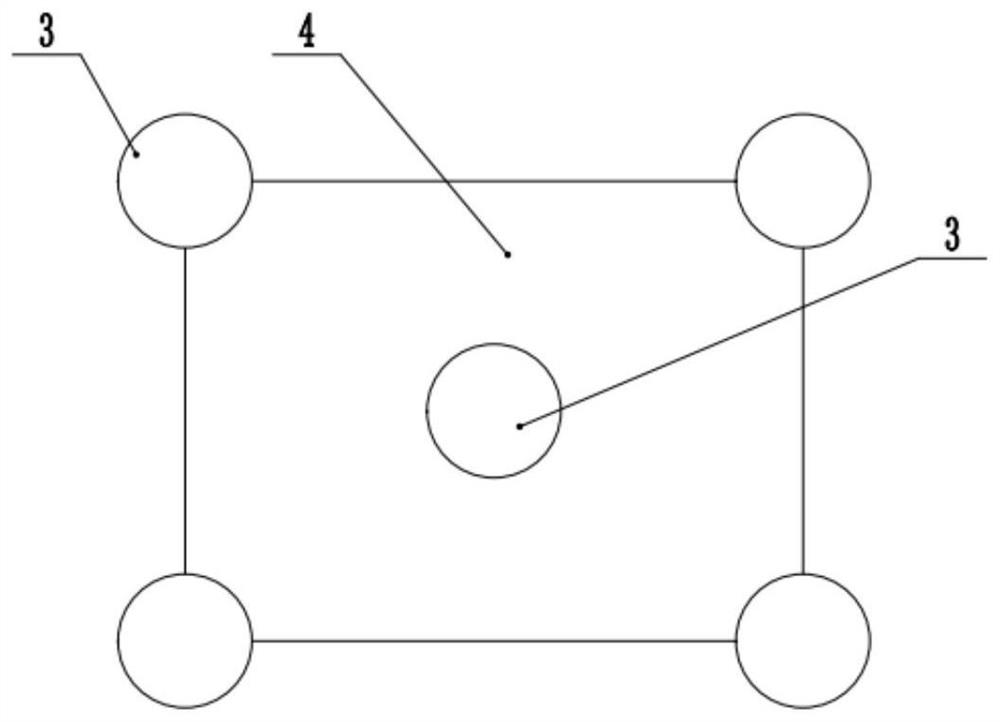A kind of restoration method of coastal wetland Suaeda salsa
A restoration method, the technology of Suaeda salsa, which is applied in the field of restoration of coastal wetland Suaeda salsa, can solve the problems of insufficient upstream water, difficulty in large-scale implementation, and soil compaction, so as to improve biological connectivity and prevent sea ice erosion , The effect of the grid is firm
- Summary
- Abstract
- Description
- Claims
- Application Information
AI Technical Summary
Problems solved by technology
Method used
Image
Examples
Embodiment 1
[0031] This embodiment provides a method for restoring Suaeda salina in coastal wetlands. A grid is arranged on the coastal wetland, and the grid is woven from wetland grasses; the grid is composed of several horizontal dividing devices and The longitudinal dividing devices are vertically crossed, and several square grid cells are formed inside the grid. The grid cells are provided with micro-topography of pits and holes arranged in the shape of plum blossoms, so as to enhance the hydrological connection and biological connection of the restoration area. The grilles are arranged in the bare spot area and the degraded area of the Suaeda salina wetland in the intertidal zone. The grids are laid out from mid-November to mid-December each year. Suaeda salsa grows in the grid cells.
[0032] The grid in this embodiment is a shallow grid, such as figure 2 As shown in the figure, the shallow grid is formed by splicing a plurality of cylindrical or bar-shaped grid bars 5, and the...
Embodiment 2
[0036]The difference between this embodiment and Embodiment 1 is that the shallow grid grid described in this embodiment is set in the middle tidal flat, and each grid cell in the middle tidal flat is 50-60 cm long, 50-60 cm wide, and 5-8 cm in diameter. , In this embodiment, each grid unit is 55 cm long, 53 cm wide, and 7 cm in diameter of the grid bars. The wetland grasses are reeds. The diameter of the middle tidal flat pit can be selected in the range of 10-15 cm and the depth is 8-10 cm. In this embodiment, the diameter of the tidal flat pit is 13 cm and the depth is 9 cm.
Embodiment 3
[0038] The difference between this embodiment and Embodiment 1 is that the shallow grid grid described in this embodiment is set on a low tidal flat, and each grid unit is 25-35 cm long, 25-35 cm wide, and 3-5 cm in diameter of the grid bars. In the embodiment, each grid unit has a length of 35 cm, a width of 25 cm, and a diameter of the grid bars of 4 cm. In this embodiment, the low tidal flat pits are 5 cm in diameter and 5 cm in depth. The wetland grass herb is Spartina alterniflora. Spartina alterniflora has a higher degree of lignification than reed plants, stronger toughness, salt tolerance, flood resistance, wind and wave resistance, and is more suitable for grilling. At the same time, Spartina alterniflora is included in the list of the world's 100 most dangerous invasive species. It is manifested in: (1) destroying the habitat of offshore organisms and affecting tidal flat aquaculture; (2) blocking the waterway and affecting the departure of ships; (3) affecting the ...
PUM
 Login to View More
Login to View More Abstract
Description
Claims
Application Information
 Login to View More
Login to View More - R&D Engineer
- R&D Manager
- IP Professional
- Industry Leading Data Capabilities
- Powerful AI technology
- Patent DNA Extraction
Browse by: Latest US Patents, China's latest patents, Technical Efficacy Thesaurus, Application Domain, Technology Topic, Popular Technical Reports.
© 2024 PatSnap. All rights reserved.Legal|Privacy policy|Modern Slavery Act Transparency Statement|Sitemap|About US| Contact US: help@patsnap.com










